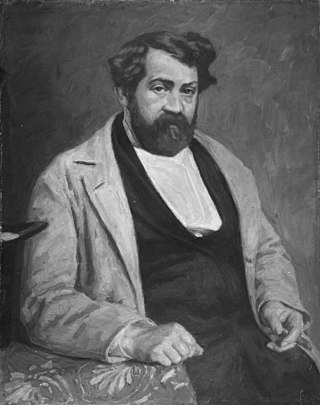
Johan Henrik Nebelong was a Danish architect. He worked in Norway from 1840 to 1853 and was best known for interior design work on Oscarshall (1847–1852). Nebelong also taught at the Royal Academy of Arts in Copenhagen.
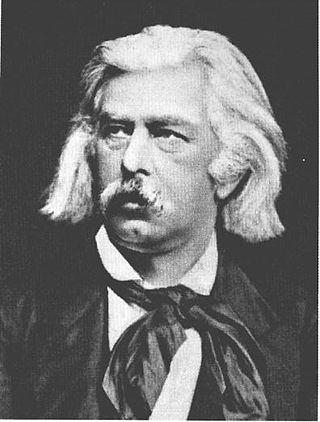
Heinrich Ernst Schirmer was a German-born architect most noted for his work in Norway. Schirmer worked in Norway from 1838 to 1883 and left his mark on a number of public buildings. He contributed significantly to the introduction of the so-called Swiss architectural style in Norway, based partly on Italian villa style, Gothic Revival, and neoclassicism.

Vålerenga Church is a church located in Oslo, Norway. Vålerenga church stands in the middle of Vålerenga park in the neighborhood of Vålerenga. The church belongs to the parish of Vålerenga of the Oslo arch-deanery within the Diocese of Oslo of the Church of Norway.

Victoria Terrasse is a historic building complex located in central Oslo, Norway. The complex now houses the Norwegian Ministry of Foreign Affairs.
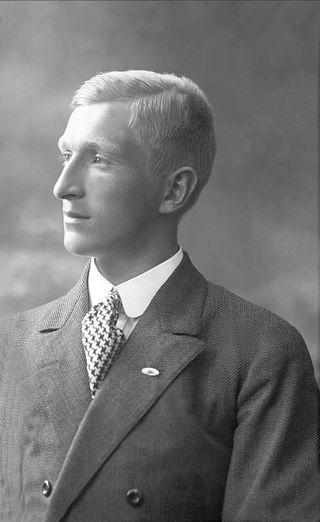
Lars Thalian Backer was a Norwegian architect. Backer was a pioneer of modernism in Norwegian architecture during the 1920s.

Lilla Georgine Hansen was Norway's first female architect.

Nore is a village in the municipality of Nore og Uvdal in the county of Buskerud, Norway. It is located in the traditional region of Numedal.
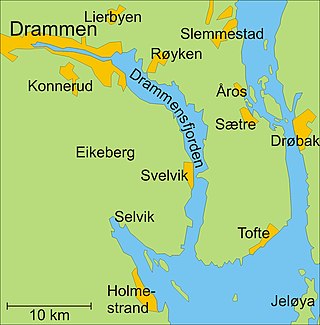
Åros is a village in Røyken in Asker municipality in Viken county, Norway. The population of Åros (2005) is about 1 142.

Albert Waldemar Hansteen was a Norwegian architect.
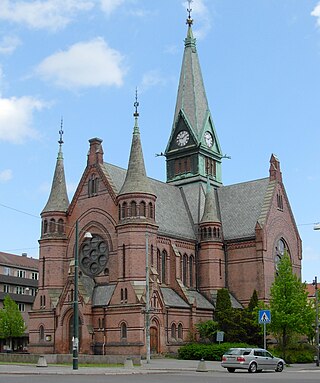
Christian Fürst was a Norwegian architect.
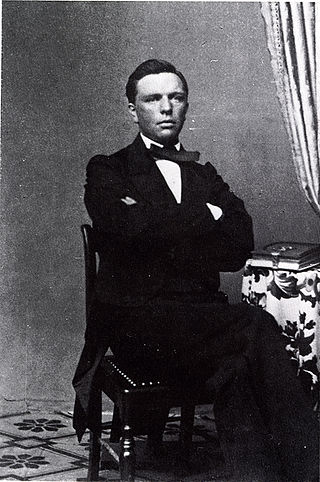
Georg Andreas Bull was a Norwegian architect and chief building inspector in Christiania for forty years. He was among the major architects in the country, and performed surveying studies and archeological research.

Andreas Friedrich Wilhelm von Hanno was a German-born Norwegian architect, sculptor and painter. He was among the leading architects in Norway during the middle of the 1800s.

Sigurd Lunde was a Norwegian architect. He was born in Bergen, Norway. From 1894–95, he worked as an assistant to architect Jens Zetlitz Monrad Kielland. He attended the Technical University of Berlin from 1896–98, and established his own practice in Bergen in 1898. From 1904–1906 he worked in Ålesund, participating in rebuilding the city after the 1904 fire. He became one of the more prolific architects in western Norway. He also designed interiors and furniture.
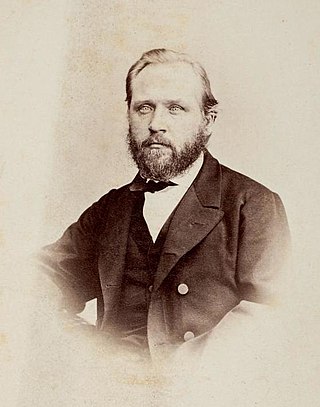
Conrad Fredrik "Fritz" von der Lippe was a Norwegian architect.

Fiskum is a parish in the municipality Øvre Eiker in Buskerud, Norway.

Carl Otto Løvenskiold was a Norwegian naval officer, business executive and landowner. He served as the Norwegian prime minister in Stockholm during 1884. By birth, he is a member of Løvenskiold noble family.
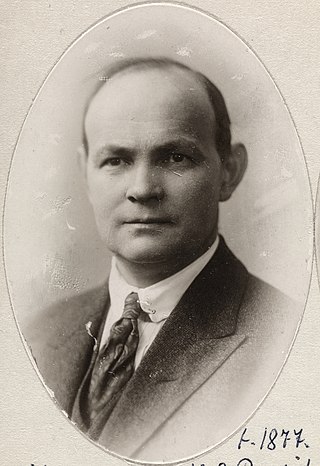
August Bendix Christofer Nielsen was a Norwegian architect.

The 1914 Jubilee Exhibition took place in Kristiania, Norway, from May 5 to October 11, 1914. It marked the centennial anniversary of the 1814 constitution and focused on industry and agriculture. The main location was the grounds of Frogner Manor, in addition to a subsection on shipping at Skarpsno at Frognerkilen. The exhibition opened on 15 May, and was closed on 11 October 1914. The total number of visitors was more than 1.5 million. On 11 October, the final day, more than 100,000 visitors visited the exhibition.

Eidsberg Church is a parish church located at Eidsberg in Viken county, Norway. The Church is located down to the river Glomma by the side of the County Road 124. Eidsberg Church is associated with the Østre Borgesyssel deanery of the Diocese of Borg.

Harald Waldemar Bødtker was a Norwegian architect.
























